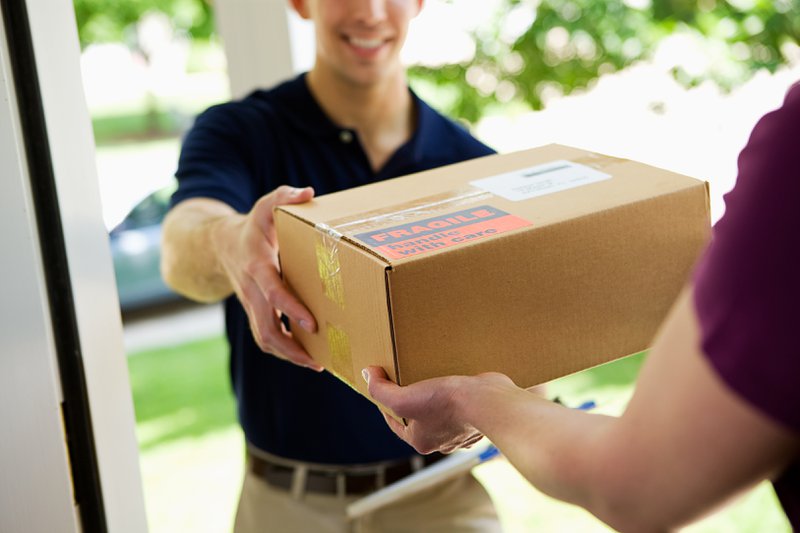If you’ve got a product to sell, there’s only so far you can go with a physical store. Making the transition to online sales is a no-brainer if you want to reach more buyers. After all, eCommerce accounted for nearly one in five retail sales worldwide in 2022. The question for entrepreneurs is rather whether to create your own online store or to sell on Amazon.
Of course, there aren’t any wrong decisions here. It’s rather about what suits your particular business goals. Plus, there are other choices, such as selling on social sites like Facebook or TikTok. The good news is that there’s plenty of room for everybody. Moreover, whichever route you decide to go, you won’t have to give up your physical store.
Hitching your wagon to a star like Amazon does have its advantages. Creating your own distinct online store can also be a great decision. Now, let’s look at the pros and cons of the different options. We’ll start by diving into the advantages of selling your wares on the world’s largest online retailer: Amazon.
Deciding to Sell on Amazon: The Advantages
Make no mistake. Amazon is the big fish in the big pond. Even as China, the world’s largest retail market, is dominated by a number of local eCommerce retailers, Amazon remains firmly entrenched as the world’s biggest online retailer.

From its beginnings as an online bookstore in 1994, the internet giant has grown into a retail titan. In 2003, when it first became profitable, Amazon reported a net income of $33 million. Twenty years later, the company has a market capitalization of $1.43 trillion.
The key to Amazon’s growth is the participation of resellers. Initially, they wholesale purchase products and then resell them on Amazon for a profit. Eventually, however, they can realize greater profitability by carrying their own labels. Either way, these companies leveraged Amazon’s many advantages to reach more customers and sell more products.
What, then, is the advantage to sell on Amazon? By putting their products on the Amazon platform, sellers gain access to a wide customer base on a global scale. They also enjoy heightened visibility by having their products included in Amazon’s search algorithms. Finally, Amazon offers an easier way for sellers to stock and deliver products via Fulfillment by Amazon, or FBA.
Reach
Currently, Amazon is available in more than 50 countries around the globe. World Population Review estimates that around 2.7 billion people worldwide shop on Amazon, including over 200 million Amazon Prime members. For retailers, even getting a measly one-tenth of just 1% of that market means millions of customers.
Visibility
Have you tried looking up information online about a product you wanted to buy? Chances are, an Amazon product description will be one of the first that pops up from your query. This is yet another illustration of how much power Amazon wields in the online retail market globally. Even non-shoppers refer to Amazon when looking up products that catch their interest.
In May 2022, Amazon’s US website reported 2.4 billion visits, making it the most visited eCommerce site in the country. So, imagine what that reach could do for your brand name and your products.

Convenience
To sell on Amazon means not having to worry about a lot of behind-the-scenes processes. It also means a reduction in your operating costs. With Amazon’s FBA program, sellers won’t have to deal with staffing, storage, or even delivery.
In addition, Amazon’s 24/7 customer service means customers will have always-on help for their questions and concerns about the brand, the product, and delivery specifics. Therefore, instead of worrying about how your product is going to get to into your customer’s hands, you can instead focus your efforts on growing your business and increasing earnings.
Leveraging Amazon as a Sales Channel: Cons to Consider
Of course, there are also downsides to signing up with Amazon. Sellers need to understand that selling on Amazon comes with a number of risks. This is why retailers should always read the fine print before committing to Amazon–especially if it’s their exclusive sales channel.
Stiff Competition
One significant disadvantage of signing up with Amazon is that it positions your brand and product alongside your competitors. Because Amazon doesn’t limit the number of sellers available for a single product, it puts you in the challenging position of competing with others within the same platform. As such, if your rivals sign up for FBA and other premium services, you’ll have no choice but to do the same. Otherwise, you might find your products marginalized in more ways than one.
Demanding Requirements
As the selling platform, Amazon requires you to submit regular updates on product details and other information. The specifics of these conditions mean that businesses will have to dedicate time and effort to producing Amazon-only information.
In addition, uploading this information and other prerequisites–such as images–involves using Amazon’s application programming interface (API) tool. Many merchants find these requirements too technical for their tastes. Without automation tools that simplify the online merchandising process, the resellers of multiple lines and products may find Amazon’s compliance conditions too cumbersome.
The Power of Building Your Own Website
Creating your own online storefront removes the issues associated with Amazon’s platform. As the owner of your own eCommerce site, you have total control over how to promote your brand identity and what content to include. Going solo also means directly dealing with customers instead of receiving reports after the fact. Moreover, you get to decide when and how to diversify your product lines and scale your growth beyond the limits imposed by Amazon.

Additionally, when you sell on Amazon, your products compete against thousands of similar items. You’ll need to pay extra for advertisements and special placements to improve your visibility. However, all these options to improve your footing are also available to others. Eventually, you and your competitors will pay more for the privilege of staying afloat instead of rising above.
Why Sell on Amazon When You Can Create DIY Websites?
In order to stand head and shoulders above the rest, you’ll have to offer something unique. This means forsaking the convenience of hooking up with platform providers such as Amazon. Instead, you’ll be creating a website for eCommerce that aims to provide an even better customer experience.
One way to achieve this is by taking the time and effort to design a website that makes the buying process more enjoyable. From easily navigable controls to smart merchandising to easy checkout–by paying attention to the smallest details you can ultimately win over customers. In other words, you should focus on both the user and the experience when designing your website’s user interface (UI). By giving buyers a streamlined but gratifying sales journey, they’ll be more than happy to tell others about their positive experience.
An Easier Way to Get Repeat Customers
A pleasant side effect of a good customer experience is that clients will invariably keep coming back for more. If they’ve found the solution to their problems and had a great time while doing so, why shouldn’t they? In contrast, selling on online marketplaces such as Amazon is a crapshoot at best. Typically, the customer’s experience reflects their perception of Amazon’s performance throughout the sales process. And while they may return to Amazon, it’s not guaranteed that they’ll return to you in particular.
The same goes for any customer service interaction. Whether a concern gets resolved successfully or otherwise, the platform gets the credit for the resolution. At the same time, Amazon may even pass on the blame to resellers such as yourself if a problem proves too persistent.
Utilizing Merchandising Tools for Your Website
To make an online storefront successful, you’ll need to ensure that every element works like a charm. Whether it’s the well-designed interface, the clean, crisp merchandising displays, the payment systems, or the checkout process, everything should work as intended. By deploying a merchandising tool, resellers can drastically improve the organic visibility of their products.

Merchandising tools can also improve customer perceptions. For instance, when the right displays support current marketing campaigns and provide accurate, timely, and relevant information. All in all, this makes buyers’ purchasing decisions easier. Good luck getting these custom tools to work for you on eCommerce platforms like Amazon and other large retail sites!
What is Digital Retail Merchandising?
Digital retail merchandising is all about duplicating the look, feel–and sometimes soul–of a real, brick-and-mortar store. The tasteful overall design, the simplicity of use and convenience of controls, and the masterful arrangement of products and their variants are all factors contributing to the user experience. After all, the objective is straightforward: curate the online retail experience so as to make products more attractive and sales-worthy.
Just as in physical stores, customers like to see variants of the products they’re interested in. Don’t leave this visualization up to the customer’s imagination. Most would prefer seeing the real thing–or at least its digital image. Therein lies the scope of retail merchandising. With the right tools, online store merchandisers can provide maximum visibility for products and product variants. In contrast, if data on variants is only available during checkout, your prospective buyer may lose interest before they ever get there.
Enhancing User Experience and Sales
The best merchandising leaves nothing to the imagination. Instead, creative merchandising can–and will–work wonders on interested clients. By showing products and their various incarnations (whether by size, color, material, or even design), customers will have a better idea of what they want. And, if they know a product’s availability via merchandising, they’ll be happy to close the deal immediately as well.
A dynamic team armed with smart, automated, and easy-to-use tools can simplify merchandising tasks even as results continue to improve. Providing a seamless customer journey–from browsing products to checking out items–remains key to maintaining online sales success.
The Importance of Branding and Customer Relationships
Part of what makes a brand is its relationship with its customers. In most cases, the value of a brand is directly proportional to the intensity of the consumer’s affection for it. Similar to how humans behave in an actual relationship, this experiences determines the direction in which the connection will lead them.

Thankfully, building and managing your own eCommerce website allows entrepreneurs to communicate with their target market directly instead of through another platform. Once buyers establish an emotional connection with a brand, it’s likely to produce a chain effect that enhances a seller’s good standing significantly.
It’s really very simple. When designing your own websites, you need to provide a better customer experience, establish an emotional connection with buyers, and keep them coming back for more. Delivering all three objectives can go a long way toward establishing a sizeable–and loyal–following.
Why Sell on Amazon When You Can Have Your Own Website?
Building meaningful relationships with customers is something that digital merchandising can facilitate–optimizing the customer experience, attracting new customers, and retaining existing ones.
Fulfilling your digital merchandising goals doesn’t have to be a complicated, repetitive task. By leveraging effective merchandising to drive up efficiency, Zobrist Software’s Smart Merchandiser is one such solution. Whether a seller has a few brands or a few thousand, Smart Merchandising can help keep storefronts organized, tidy, and informative. Moreover, Smart Merchandising features automated tools to arrange and display selected products and accurate product information.
Learn more about how Smart Merchandiser can help you achieve eCommerce success with your own website. Simply drop us a message here and tell us a little more about your business. After that, we’d be happy to contact you and make some initial assessments.



